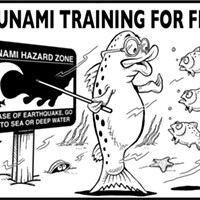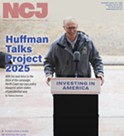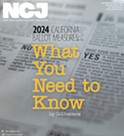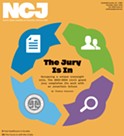Tuesday, March 27, 2018
Tsunami Warning Test Set for Tomorrow
Posted By Kimberly Wear @kimberly_wear on Tue, Mar 27, 2018 at 4:50 PM
Fifty-four years ago today, at 5:36 p.m., the earth beneath southern Alaska began to shake — and continued to shake for nearly five minutes — with a force that still marks the Good Friday temblor as the largest ever to hit the United States.
More than 100 people were killed by the magnitude-9.2 quake and ensuing tsunamis — some as high as 100 feet — which caused $311 million in damage (some $2.3 billion in today’s dollars).
That includes 11 people who lost their lives when a series of four wave surges hit the shores of Crescent City starting just before midnight and continuing for two more hours.
Several more have followed in the ensuing decades but the passage of time has brought not just improved technology but a greater awareness of the region’s tsunami vulnerability from seismic forces both near and far.
This week marks not just that tragic anniversary but also Tsunami Preparedness Week and tomorrow the National Weather Service and the county will conduct a test of the local emergency alert system.
That means, depending on where you are between 11 a.m. and noon, you could hear a siren or a broadcast message coming over the television, see the Civil Air Patrol flying along the coast or — if you’re signed up — receive a Humboldt Alert notification (register here).
This time, at least, it’s only a test.
Press release from the county of Humboldt:
More than 100 people were killed by the magnitude-9.2 quake and ensuing tsunamis — some as high as 100 feet — which caused $311 million in damage (some $2.3 billion in today’s dollars).
That includes 11 people who lost their lives when a series of four wave surges hit the shores of Crescent City starting just before midnight and continuing for two more hours.
Several more have followed in the ensuing decades but the passage of time has brought not just improved technology but a greater awareness of the region’s tsunami vulnerability from seismic forces both near and far.
This week marks not just that tragic anniversary but also Tsunami Preparedness Week and tomorrow the National Weather Service and the county will conduct a test of the local emergency alert system.
That means, depending on where you are between 11 a.m. and noon, you could hear a siren or a broadcast message coming over the television, see the Civil Air Patrol flying along the coast or — if you’re signed up — receive a Humboldt Alert notification (register here).
This time, at least, it’s only a test.
Press release from the county of Humboldt:
Are you ready for a tsunami? Monday, March 26 marks the beginning of Tsunami Preparedness Week on the North Coast. During this week, Humboldt County is taking the opportunity to practice our emergency alert procedures in the event of a tsunami generated from a distant earthquake.
On Wednesday, March 28 between 11 a.m. and noon, the National Weather Service (NWS) and Humboldt County will conduct a test of tsunami warning and communications systems. During this time, the Emergency Alert System will be activated. North Coast residents may see or hear test notifications broadcasted over the television and radio. Some residents may hear local tsunami sirens sound and observe the Civil Air Patrol flying along the coast with an audible message. Registered Humboldt Alert users will receive a test notification during this time, in addition to listed landlines.
Humboldt Alert is a voluntary emergency notification system. Registered users are able to receive notifications of public health threats, dangerous weather, safety incidents and other emergencies by landline, email and/or cell phone. To receive this free service, register at the Humboldt County Office of Emergency Services website. Tsunami Preparedness Week is a great time to prepare your household for emergencies. Reviews tsunami maps from the Redwood Coast Tsunami Work Group to familiarize yourself with tsunami zones where you live, work, play, and travel on their website or via the Humboldt County Tsunami Evacuation Zones App. Talk to your family about your evacuation plans, emergency communications and how you will reunite if you are separated during a local disaster.
NATURAL WARNING VS OFFICIAL WARNING
A Tsunami Warning is the highest level of tsunami alert and is only issued when flooding of land that is usually dry is expected. Tsunami Warnings are focused on a tsunami coming from far away. If you hear that an official Tsunami Warning has been issued, move away from the beach and out of harbor areas. Tune into local radio or television stations for more information and follow the evacuation directions of local authorities.
If a strong earthquake occurs close to our coast that lasts for 20 seconds or longer, a tsunami may follow. In this case, there will be no time for an official warning to be issued. You must rely on recognizing the natural warning signs of a tsunami. An earthquake is the most likely natural warning sign that a tsunami is coming. Other natural warning signs include the ocean water drawing back and exposing the sea floor, or hearing a load roar from the coast. If you are in a tsunami evacuation zone and observe any of these warnings, move to higher ground or inland on foot as soon as possible. There may be as little as 10 minutes between the earthquake and a tsunami. Remember that surges may continue to arrive for 24 hours or longer. For more information about tsunami preparedness visit the National Tsunami Warning Center website.
Speaking of...
-

'First in the Country': Incarcerated Students in CPH Degree Program Now Eligible for Federal Financial Aid
Jan 29, 2024 -
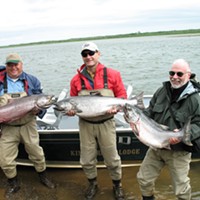
Arkley Hosted Justice Samuel Alito on His Luxury Fishing Vacation With GOP Billionaire Who Later Had Cases Before the Court
Jun 22, 2023 -
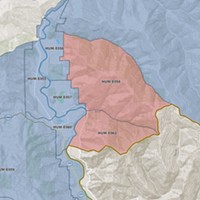
UPDATE: More Evacuation Orders Issued Near Willow Creek
Aug 5, 2022 - More »
Readers also liked…
more from the author
-
Huffman Joins Colleagues in Calling for Biden to ‘Pass the Torch’
- Jul 19, 2024
-
SECOND UPDATE: Victim of Fatal Shooting Identified
- Jul 17, 2024
-
Eureka Man Killed in SoHum Crash
- Jul 1, 2024
- More »

